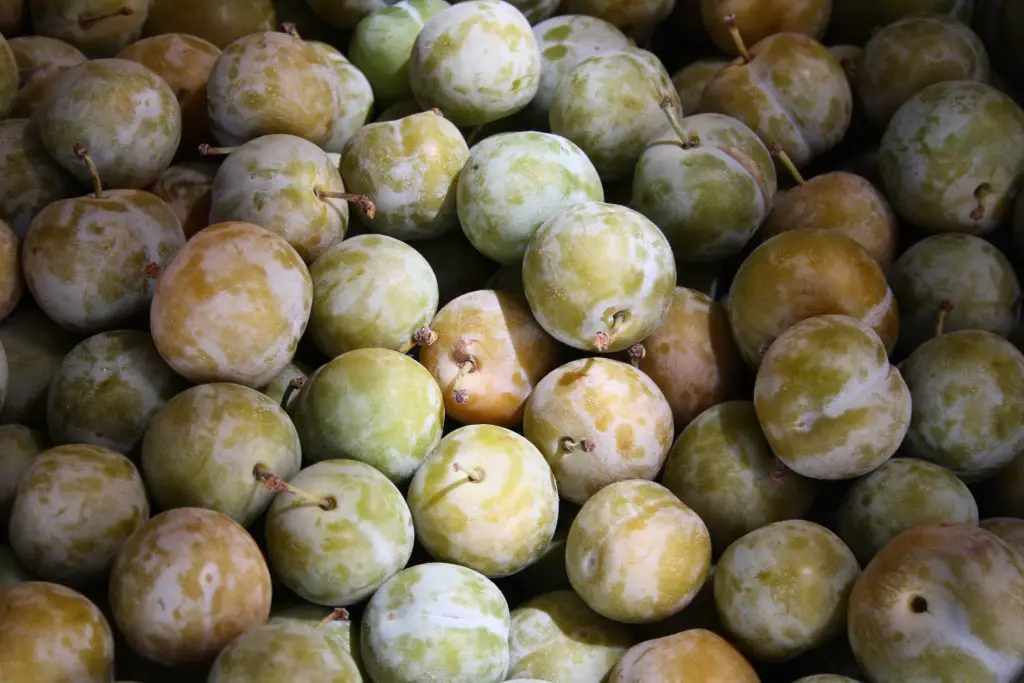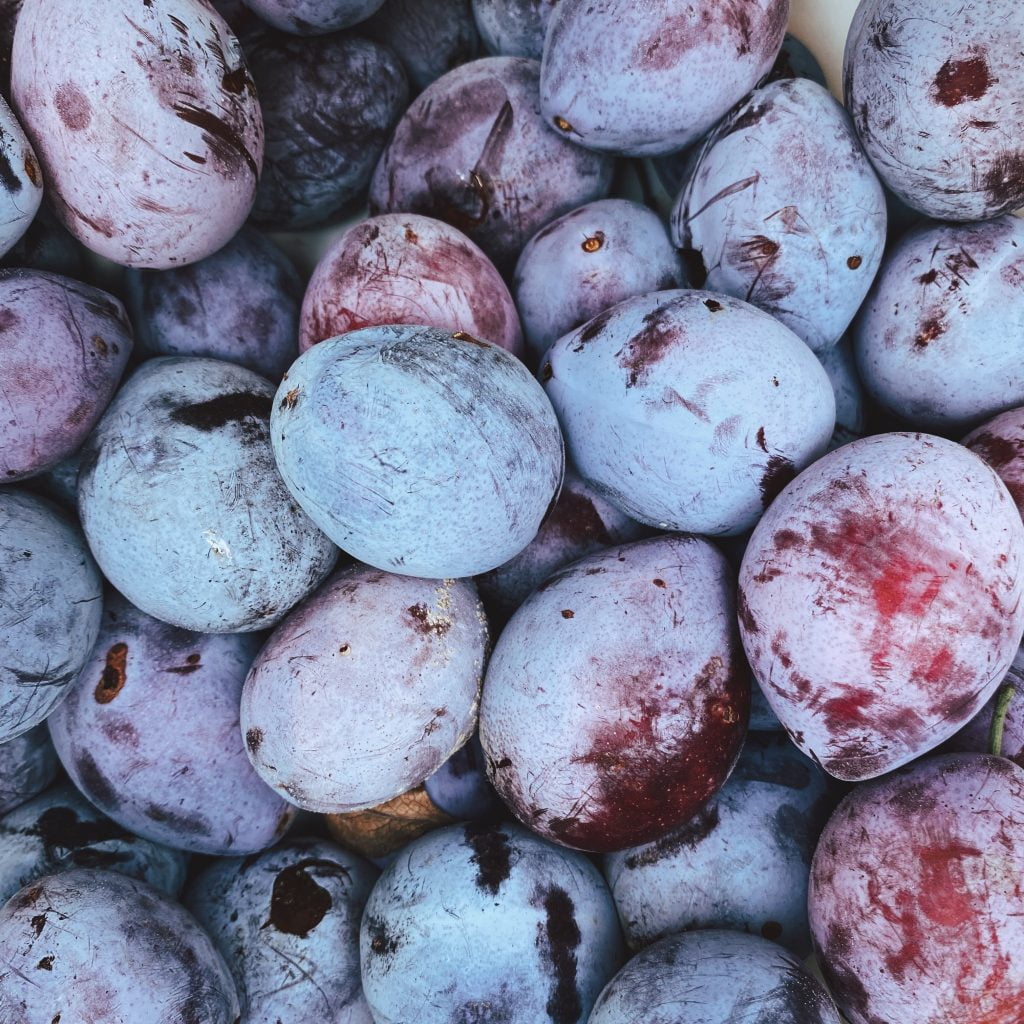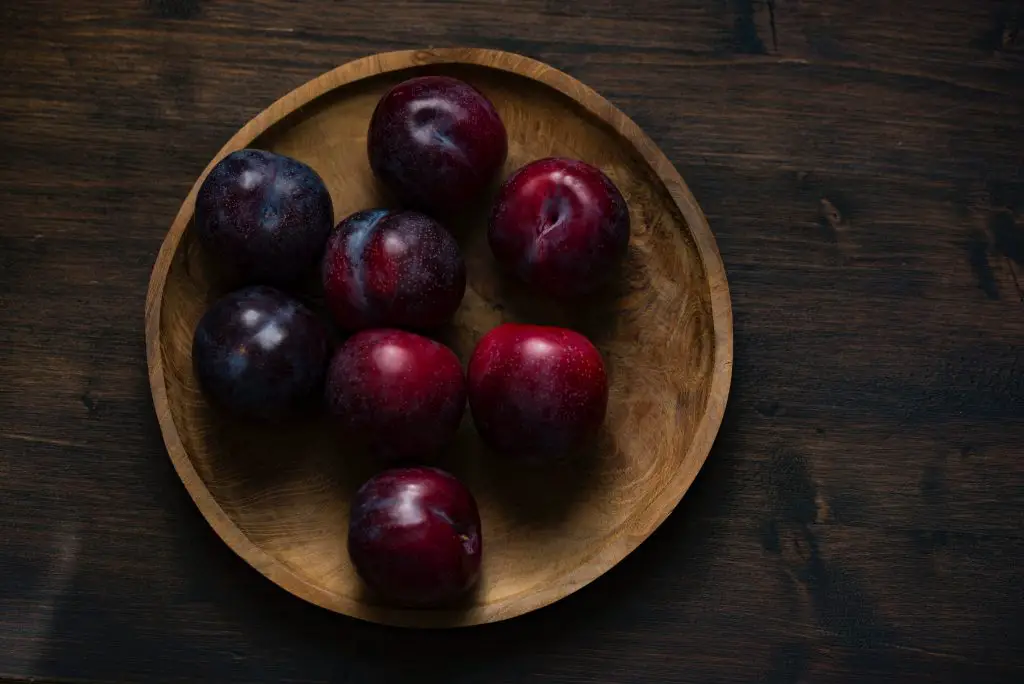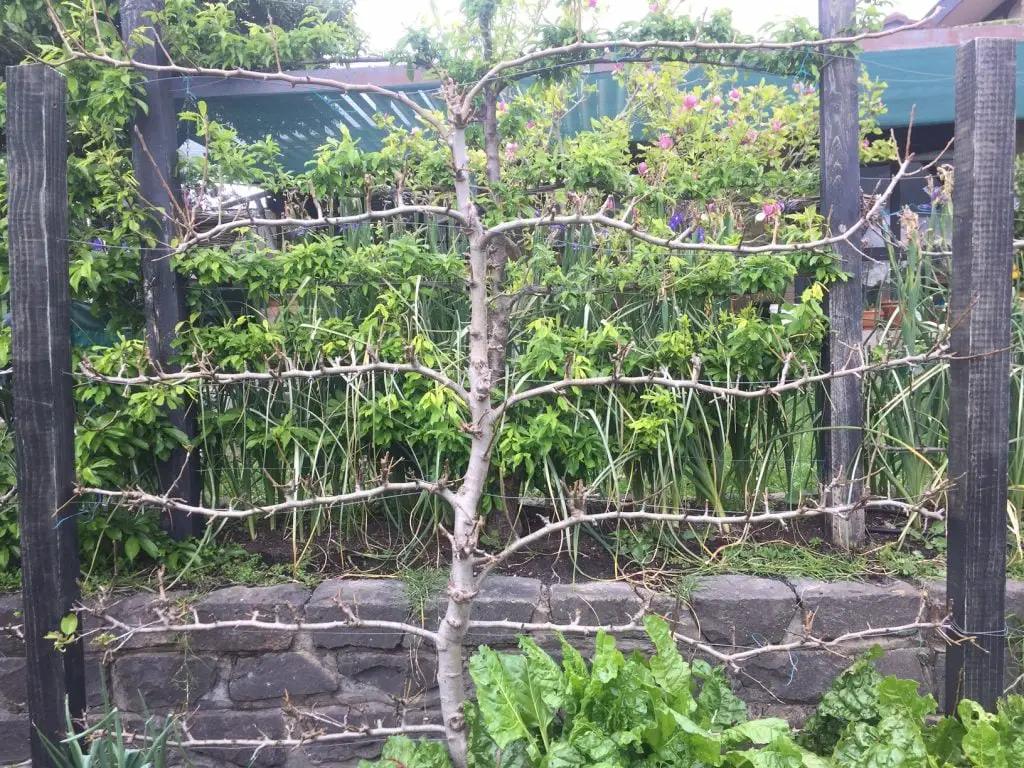How Fast Do Plum Trees Grow? Plums are fast growing deciduous stone fruit trees. The trees can be generally divided into two main groups; Japanese Plums (Prunus Salicina) and European Plums (Prunus Domestica).
The Plum Trees can grow up to 1 metre (3 ft) in a single season, producing “wippy” growth that can quickly become unruly, if left unpruned. Young trees will typically take at least 3 to 4 Years to produce fruit. This is because most fruit is produced on spurs that are at least 2 Years old. To produce fruit the Plums need to be exposed to a period of cold in the Winter, the length of time required is dependent upon the variety grown.
Where Can Plum Trees be Grown?
The limiting factor associated with growing Plums, that actually produce fruit, is the period of time a tree is exposed to cold in Winter. This is sometimes referred to as the chill hours and is the minimum number of hours a tree requires to be exposed to temperatures below 7°C (45°F).

Japanese Plum varieties typically require 500 to 900 chill hours, while European Plum varieties often require 700 to 1,000 chill hours. These chill requirements mean that Japanese Plums are hardy in Zones 4 to 10, while European Plums are suitable for growing in Zones 3 to 9. If you would like to purchase a plum tree there is a wide selection of varieties available on yougarden.com.
If you are unsure about the number of chill hours in your region, one simple method used to estimate this, is to take the average of temperature in your coldest month and compare it to the table below. If you cannot find the average temperature for the month, the value can be also estimated by taking average minimum and maximium temperature in the coolest month. These values then need to be averaged to produce a value that can be compared to the table below.
Chill Hours Average Temperature For Coldest Month
0 19.7°C (67.5°F) – No Chill
300 15.5°C (59.9°F) – Low Chill
330 15.3°C (59.5°F) – Low Chill
450 14.0°C (57.2°F) – Medium Chill
500 13.6°C (56.5°F) – Medium Chill
520 13.1°C (55.6°F) – Medium Chill
600 12.7°C (54.9°F) – Medium to High Chill
800 10.2°C (50.4°F) – High Chill
1100 7.9°C (46.2°F) – High Chill
1250 0.0°C (32.0°F) – Very High Chill
The other climatic factor that can affect the fruiting is the occurrence of late frosts. Frost damage on flowers can occur when temperatures dip below -0.5°C (31°F). Damage can also be caused in the pre-flowering stage when buds have formed but are yet to flower. At this stage, temperatures below -5°C (23°F) will prevent fruit formation. To reduce the extent of the damage it is advisable to protect the delicate buds and flowers. There are a whole heap of different options for tree protection available on Amazon depending the size of the tree.
Are Plum Trees Self Fertile?
There are some self-fertile Plum Trees that do not require pollination from a second tree. However, the size of harvests is often higher if there is a second tree present. For successful cross pollination to occur the Plum Trees must bloom at the same time. As European and Japanese Plum Trees flower at different times, 2 of the same type of Plum, is required.

Self-fertile varieties of both European and Japanese varieties are often used as pollinators. Some of the most common varieties used for this purpose is ‘Santa Rosa’ (Japanese variety) and ‘Victoria’ (European variety).
When Do Plum Trees Fruit?
Plum Trees typically flower in late Winter and Spring, before producing fruit in late Summer or Autumn. However, it should be noted that Plums tend to fruit on a Biannual basis, where a huge crop is produced one year, followed by no crop the next year.
To tell if the fruit is ripe, look for a slightly darker skin color that has a powdery film on the surface. An example of this film is shown in the picture above. The Plums that are ripe will also be softer. Additionally, they will have an aromatic smell which is also an indicator that they are ripe. If you picked Plums a little early, they can be ripened indoors.
To accelerate the ripening process, store them with an Ethylene producing fruit such as an Apple, Banana or Pear. However, be sure to check them regularly to ensure that they do not become overripe.
How To Care For Plum Trees
Plums grow best in a sunny spot, in well-drained soil. The soil should be rich with organic matter and the pH should ideally be in the Acidic range. To learn more about the pH of soil, click here.

Plum Trees are suitable for training into a formal Espalier, either in a Fan or T-shape up against the wall. Alternatively, they can be grown as a stand alone tree. For those with smaller gardens it is best to Espalier the tree, as it takes up less space and are easier to maintain and access the fruit. To learn more about how to create an Espalier, click here.
How To Plant Plum Trees
When planting a new Plum Tree it is best to do this in Winter, when the tree is dormant. At this time of year the trees will be available as bare-rooted plants. Before planting the tree it is best to add plenty of organic matter to the soil in the form of well-rotted compost or farmyard manure.
When selecting a location to plant, it is best to select a sheltered location if you live in an area prone to late frosts. The reason for this, is that a hard frost will kill the blossom. In these regions, it is also advisable to protect Plum Trees with Horticultural Fleece if a frost is forecast.
How To Prune Plum Trees
Once the tree has been planted it is best to place a thick layer of mulch around the base of the tree and water well. At this point the tree needs to be pruned, how this is done is largely dependent on the desired shape. For a stand alone tree, it is best to prune branches approximately 30 cm (12 inches) above, where the branches fork.
These cuts will encourage the tree to produce multiple shoots from each stem. In subsequent years this process can be repeated, with cuts being made 30 to 45 cm (12 to 18 inches) above the newly created forks. Any inward facing branches should be removed to create a vase shape. The vase shape will allow light and air into the trees structure, optimising the ripening of fruit.
Summer pruning will also be required as the tree will produce wippy growth, that is thin and unable to carry the weight of all the fruit. To maximise the volume of fruit that the tree can carry, it is best to reduce the size of the growth down to 4 to 5 buds. Over time large numbers of fruit spurs will develop along the main branches. This will allow the tree to carry a large volume of fruit on the tree.
The image below provides an example of the density of fruit that may be expected on the branch of a mature tree. It may be necessary to remove some of the fruit, to avoid overloading the tree.

How To Create An Espalier Plum Tree
To create an Espalier, it will be necessary to build a support structure to enable the tree to be trained, to the desired shape. There are many possible shapes that can be created, however the most common is a T-Shape.
To create a T-shaped Espalier, a support structure with horizontal tiers that are approximately 30cm (12 inches) apart, needs to be created. The easiest way to do that is by erecting two posts approximately 1.8m (6 ft) apart, with wire running between the posts.
Once the support structure has been erected, the bare rooted Plum Tree should be planted between the 2 posts. The trees main stem should be pruned at the height of the first tier. The tree will respond, over the proceeding growing season, by producing multiple stems from this point.

The stems may be tied to the support structure, on either side of the tree to produce the first tier of the Espalier. The central stem (or leader) should be left to grow upward, until the following Winter.
At this point, the leader may be cut at the height of the second tier. This will encourage the formation of new stems which will be used to created the next tier. This process is repeated until the desired height is achieved. Any undesirable growth should be removed throughout the growing season.
A Plum Tree of the size pictured above, will produce between 10 to 20 kg (20 to 40 lbs) in a season. As such, it advisable to plan what you are going to do with your harvest.
